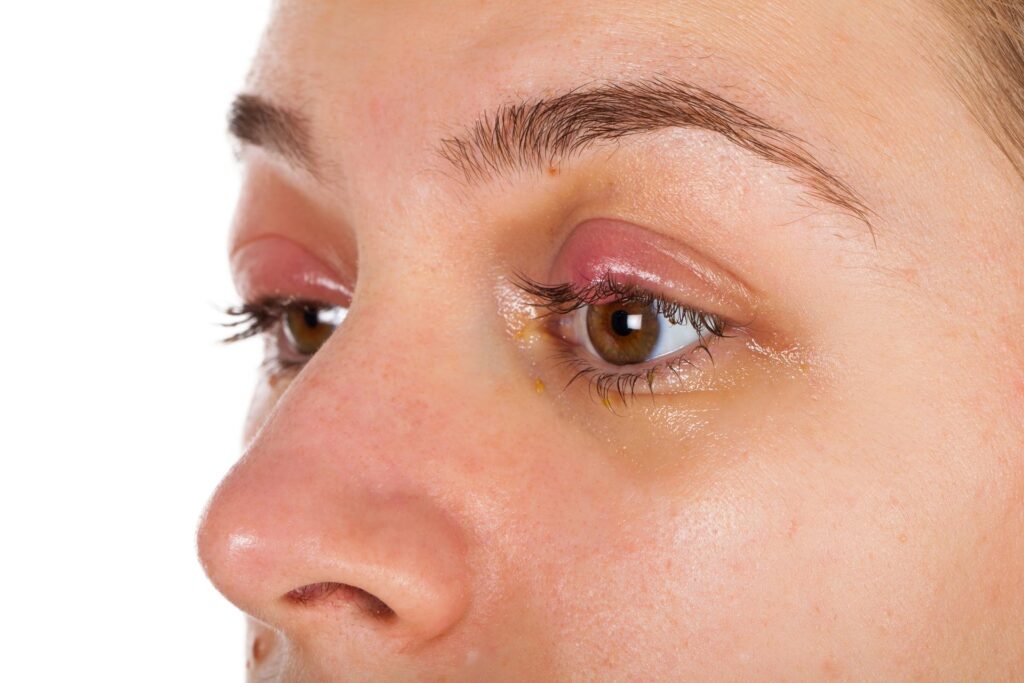Eyelid diseases
What are lid diseases?
The eyelids have an important job. They are designed to keep the surfaces of our eyes moist while protecting them from outside influences. Together with the tear ducts and the tear fluid, they guarantee healthy eyes. Foreign particles and dehydration are well avoided in this way.
However, depending on the person, eyelid diseases can occur, which not only feel uncomfortable, but can no longer guarantee the full protective function. Fortunately, such conditions can be treated quickly and easily. Surgery is rarely used. But which eyelid diseases can occur? A small overview:
Blepharochalasis is a weakening of the connective tissue caused by old age. Over time, there is a possibility that the tissues of the skin will sag. This can be seen particularly clearly in the shape of drooping eyelids and bags under the eyes. It makes people look older than they actually are. Other reasons for this are the missing collagen fibers and elastic bands, which are supposed to support the tissue.
A natural aging process can be accelerated by various factors such as:
-
Stress
-
Sleep disorders
-
Skin diseases
-
Excessive sun exposure
The whole thing is diagnosed under the term “eye diagnosis”. In the first examination, the extent of the excess is first estimated. Unfortunately, the only possible treatment is surgical. The term for the procedure is “blepharoplasty”. Ultimately, this should improve visual function. A majority do it mainly for aesthetic reasons. What many do not know: if there is excess lid tissue, the upper part of the field of vision can be restricted. Occasionally eyelashes are pressed into the eye, which leads to irritation.
Excessive number of wrinkles is a clear sign of fatigue. Even there, the procedure can make sense, even if the visual impairment is not impaired. A distinction is also made between upper and lower blepharoplasty. Inflammation or bruising to a certain degree usually occurs in the first few days after the operation. After about 30 days, the scars are almost invisible.
Chalazion and Stye - Treatment
The two eyelid diseases chalazion and stye must not be forgotten. They should be more familiar to most people. When an eyelid begins to swell, it is referred to as a chalazion. There are accumulations inside the eye. A common cause is the blockage of the gland opening. It is not uncommon for the disease to appear in young children. Dry eyes, oily skin or secretions are one of the signs. After such an illness, a cold can also appear, as well as allergies.
But how exactly is it treated? In most cases, they will go away on their own without treatment between 2 and 8 weeks. However, chalazia may disappear sooner if hot compresses are applied daily. If it is still there after this and impairs vision, a doctor must be consulted. Antibiotics are less effective in this case. Local therapies are completely sufficient in this case. The stye, on the other hand, is also treated with hot compresses. Unlike hailstones, antibiotics can help. Even an operation may be necessary. External granules that do not go back may need to be cut open by a doctor, as internal granules very rarely rupture.
Eyelid and tumors - this is how they are cared for
Furthermore, the tumors must not be ignored. So-called eyelid tumors are growths on the skin in the area of the eyelids. They appear on the upper and lower lids. However, these can be benign skin tumors such as warts and fat deposits. Nevertheless, there is a possibility that malignant tumors can be used. These can also appear on the upper or lower lid.
Among other things, they are able to expand further. They can even grow into the eye and severely limit the view. In the worst case, this can lead to inflammation. Depending on the location, the tumor can be removed directly by a doctor if necessary. Malignant tumors on eyelids grow very quickly. For this reason, the entire tissue of the tumor is often removed in just one operation.
